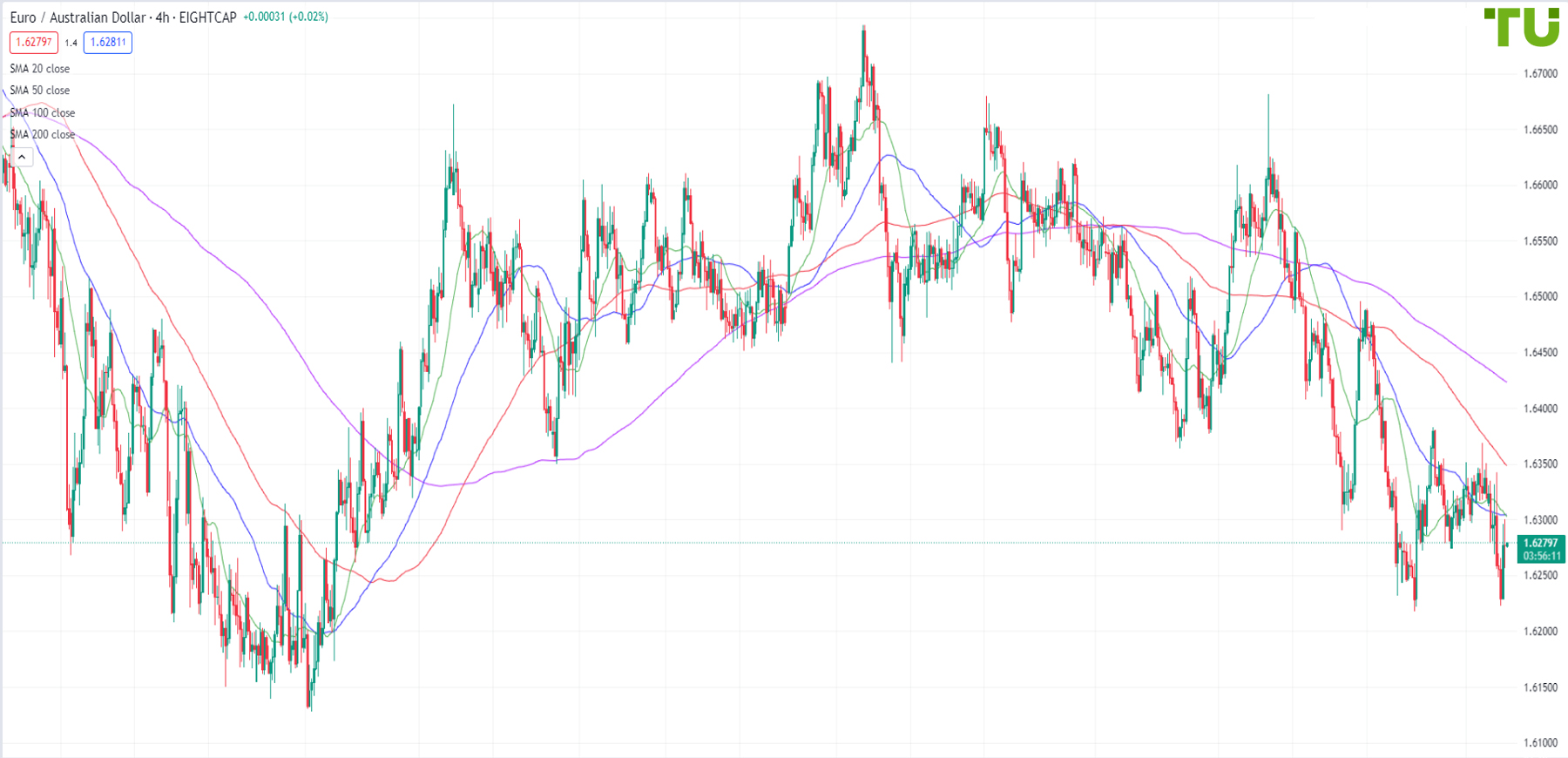
EUR/AUD forecast for today by Traders Union analysts
EUR/AUD is the currency pair that shows the price of one euro in Australian dollars. It is considered a cross pair and has rather low volatility. Euro is the base currency in the pair and the Australian dollar is the quoted currency. TU analysts use various methods of technical analysis for making forecasts. This helps traders understand the market situation quicker and make the right trading decision.
EUR/AUD tested strong support, risks of breakout increase
16.05.2024
EUR/AUD declines
15.05.2024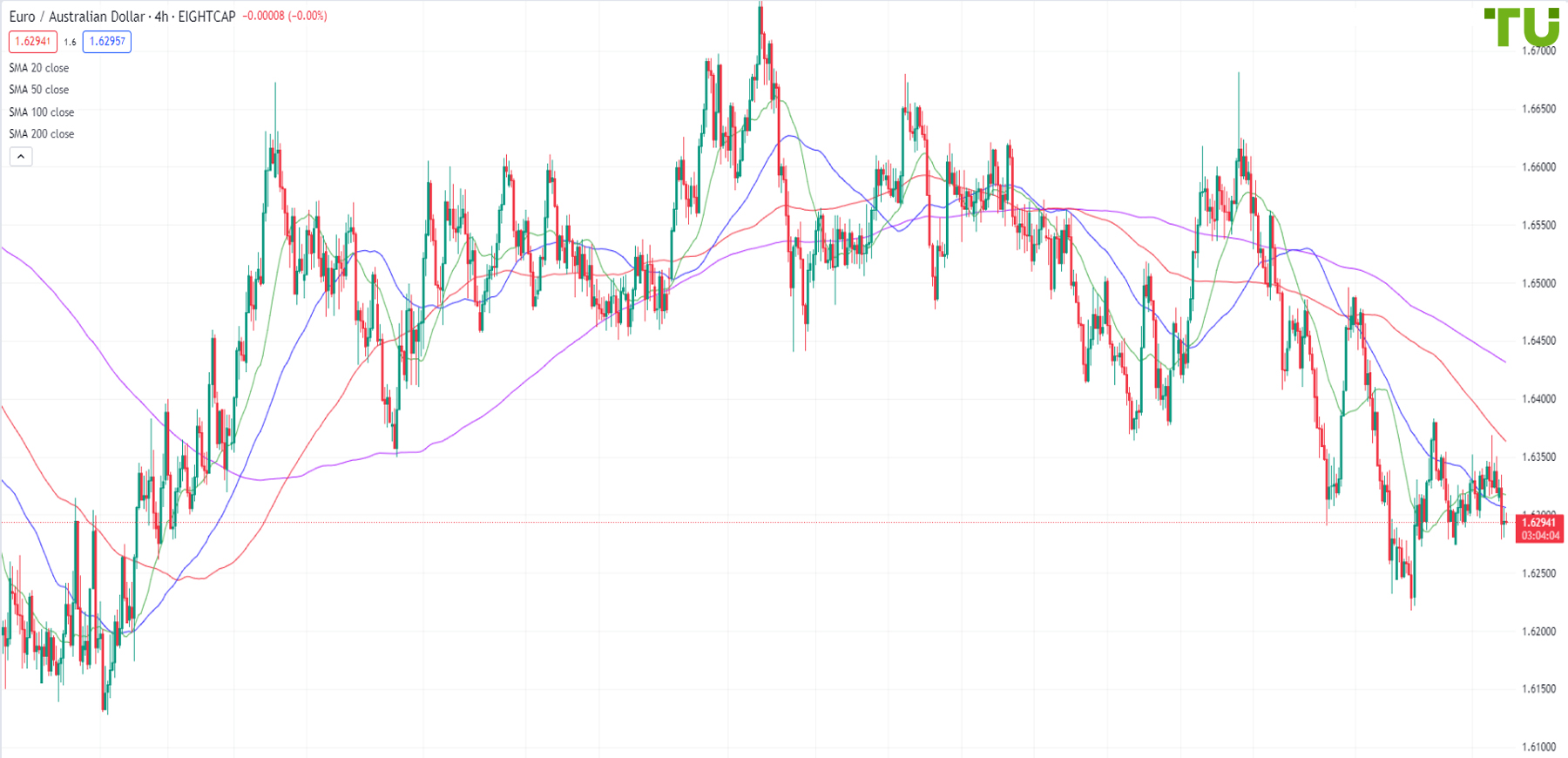
EUR/AUD attempts to break 1.6345 resistance
14.05.2024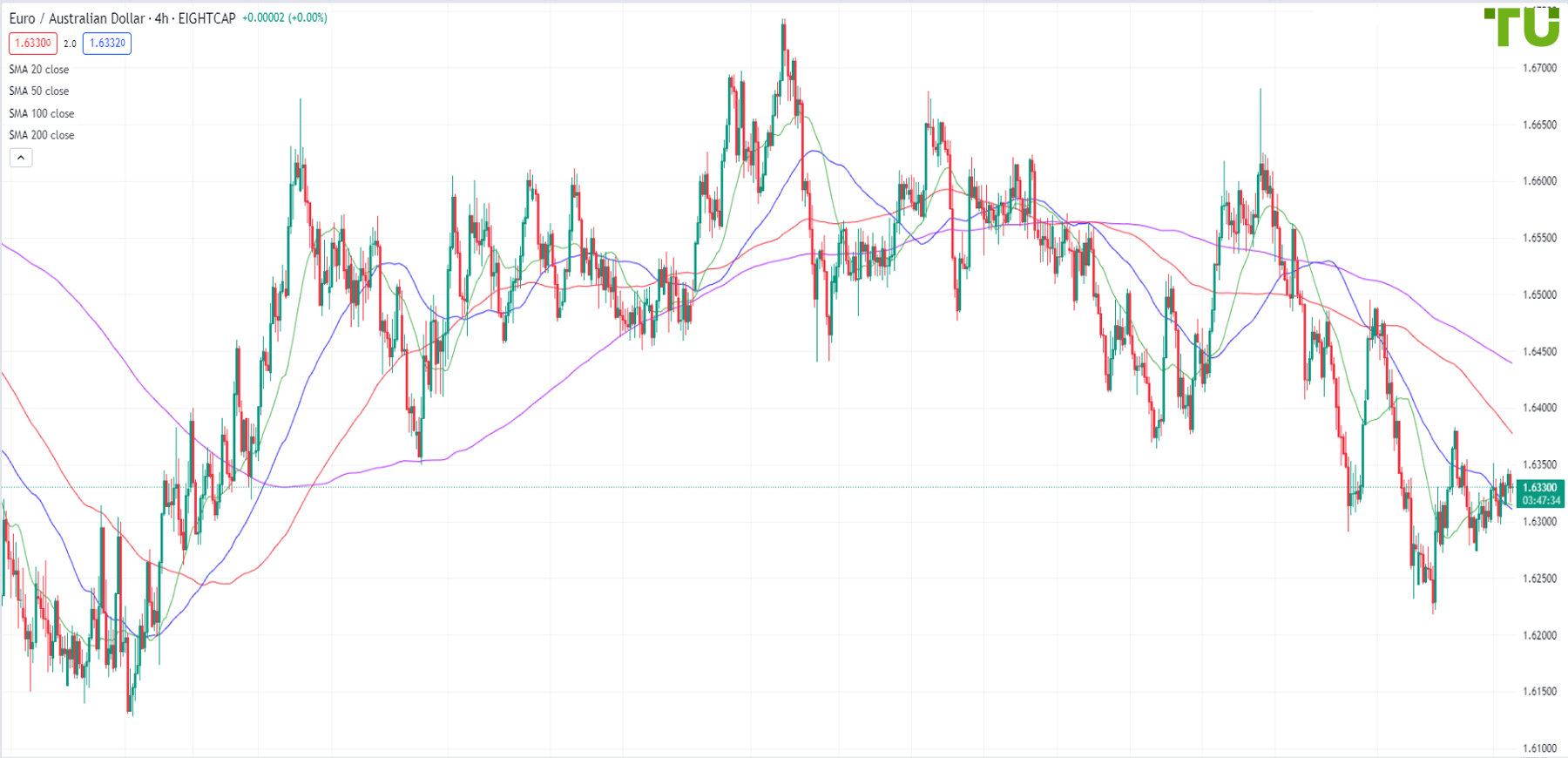
EUR/AUD is under pressure after the rise
13.05.2024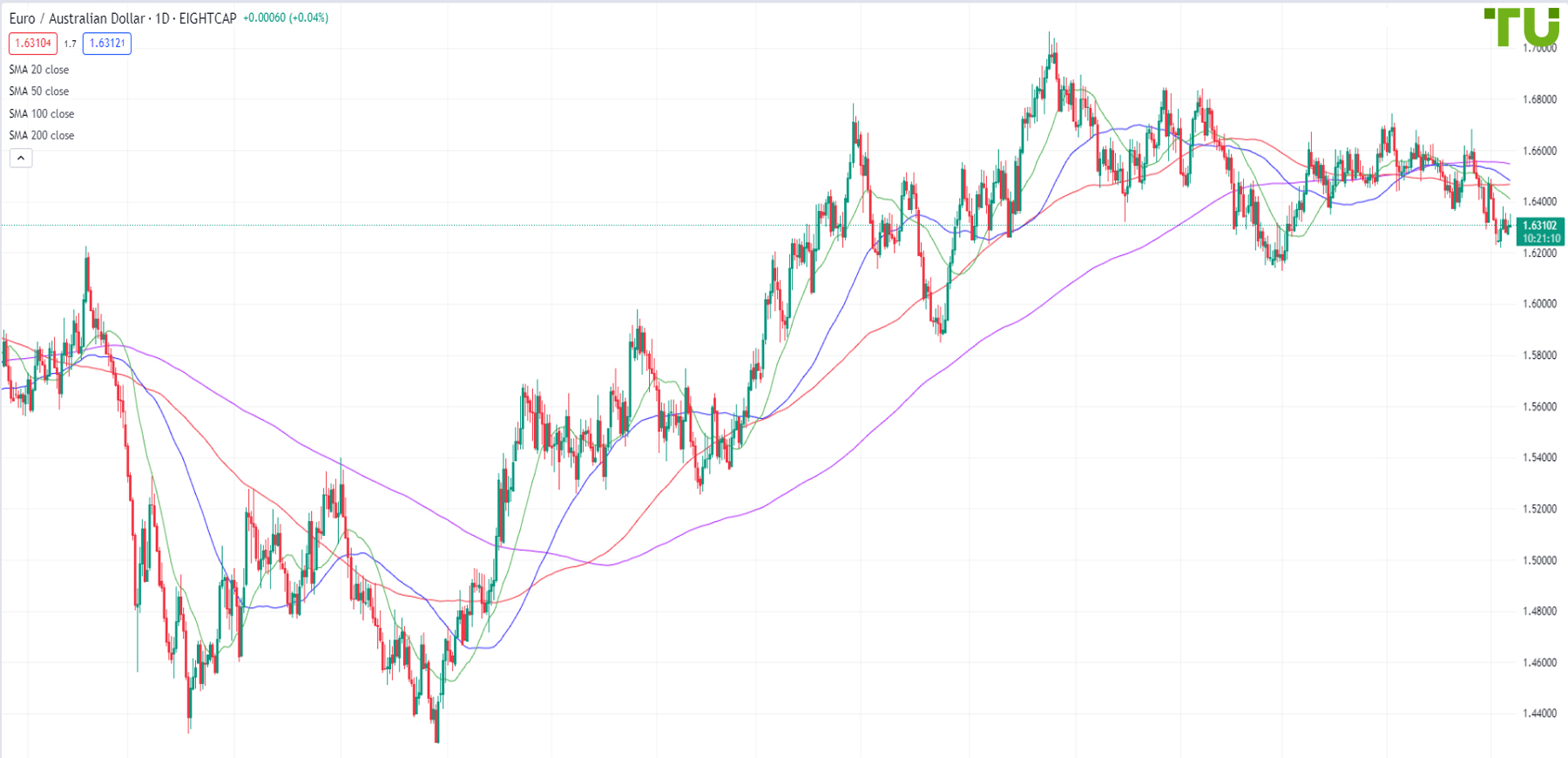
EUR/AUD is under pressure
10.05.2024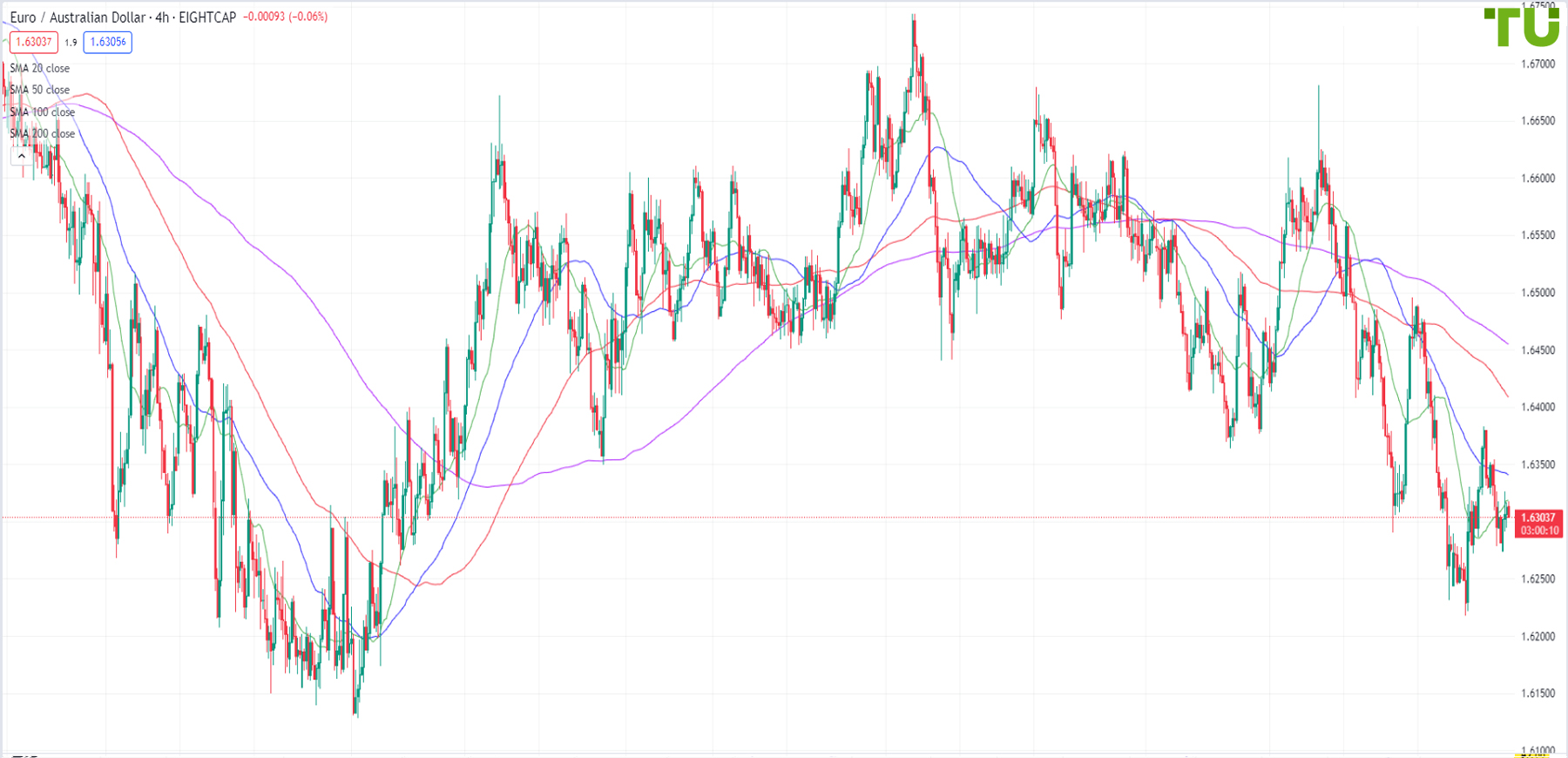
EUR/AUD remains under pressure after the rise
09.05.2024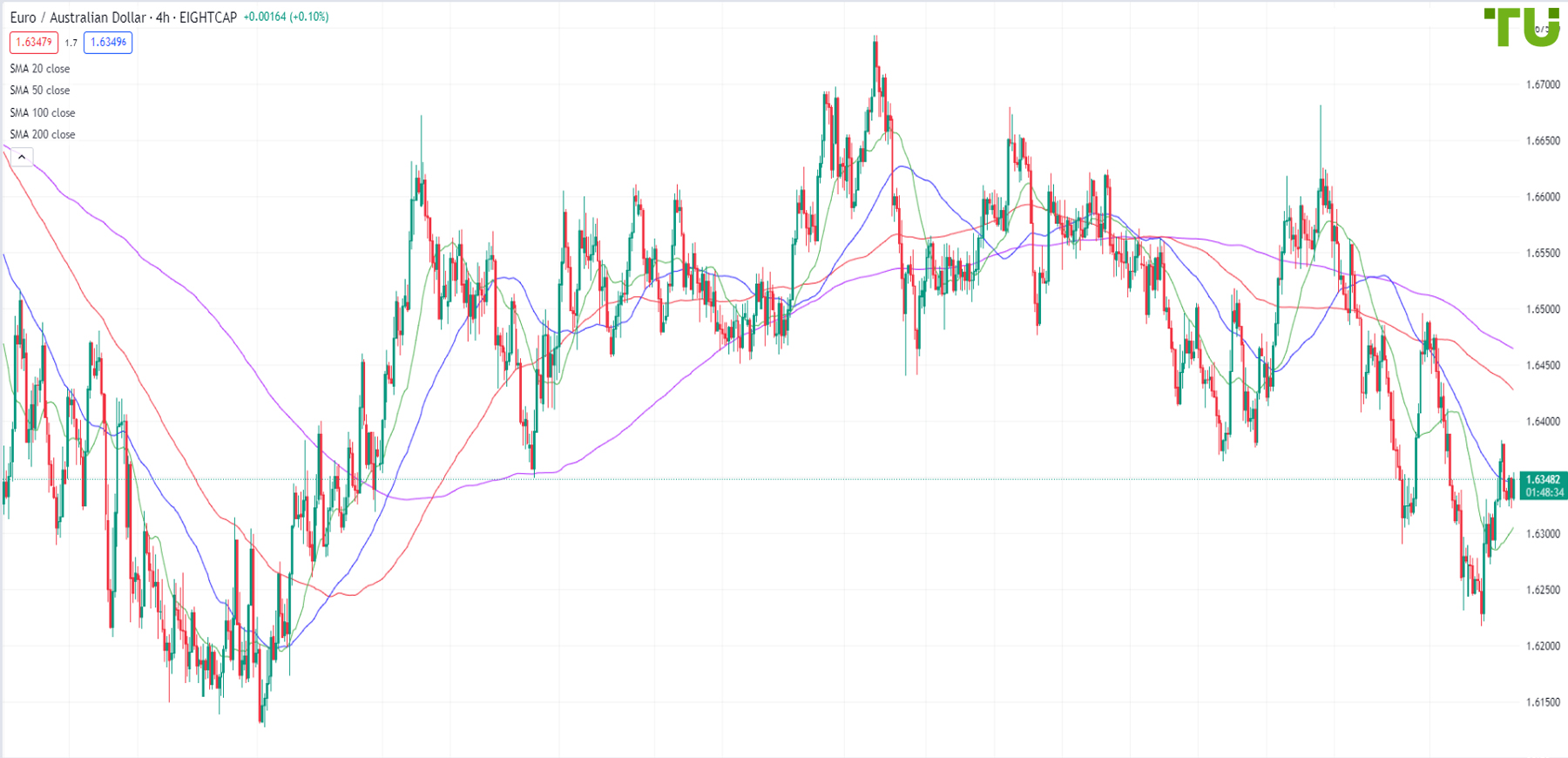
EUR/AUD remains under pressure after rise
08.05.2024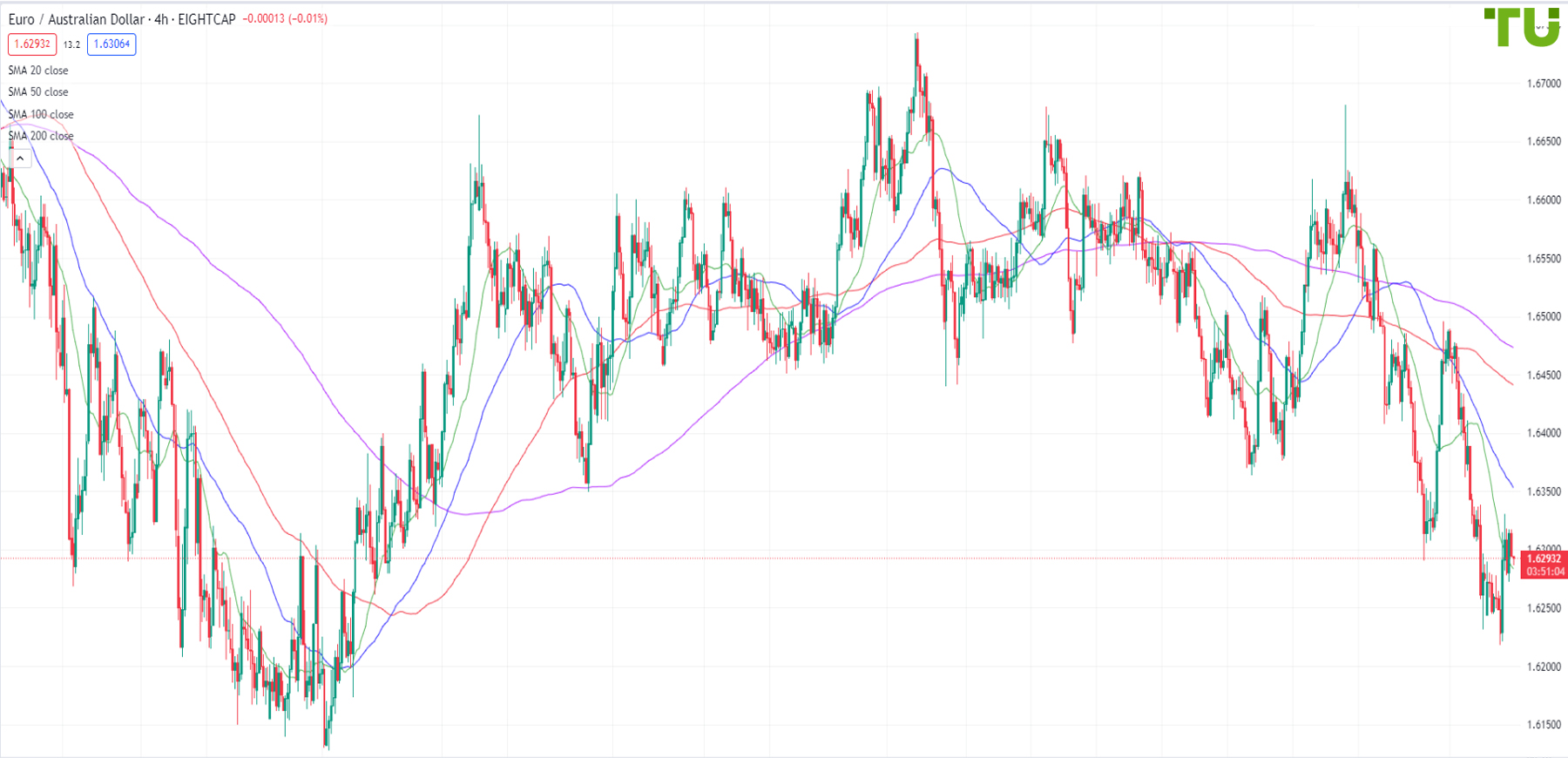
EUR/AUD recovers losses
07.05.2024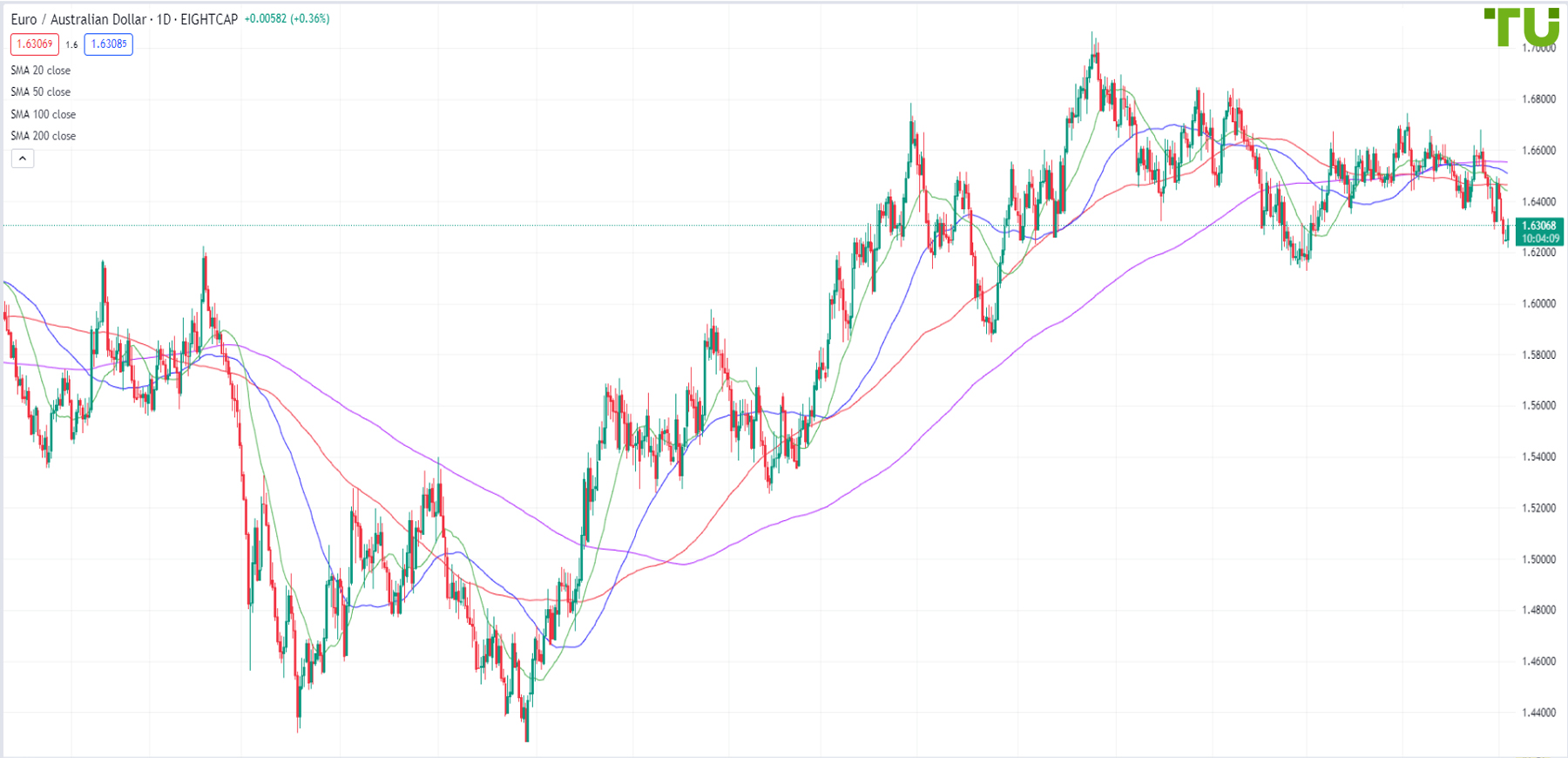
EUR/AUD returned to 1.6310 support
03.05.2024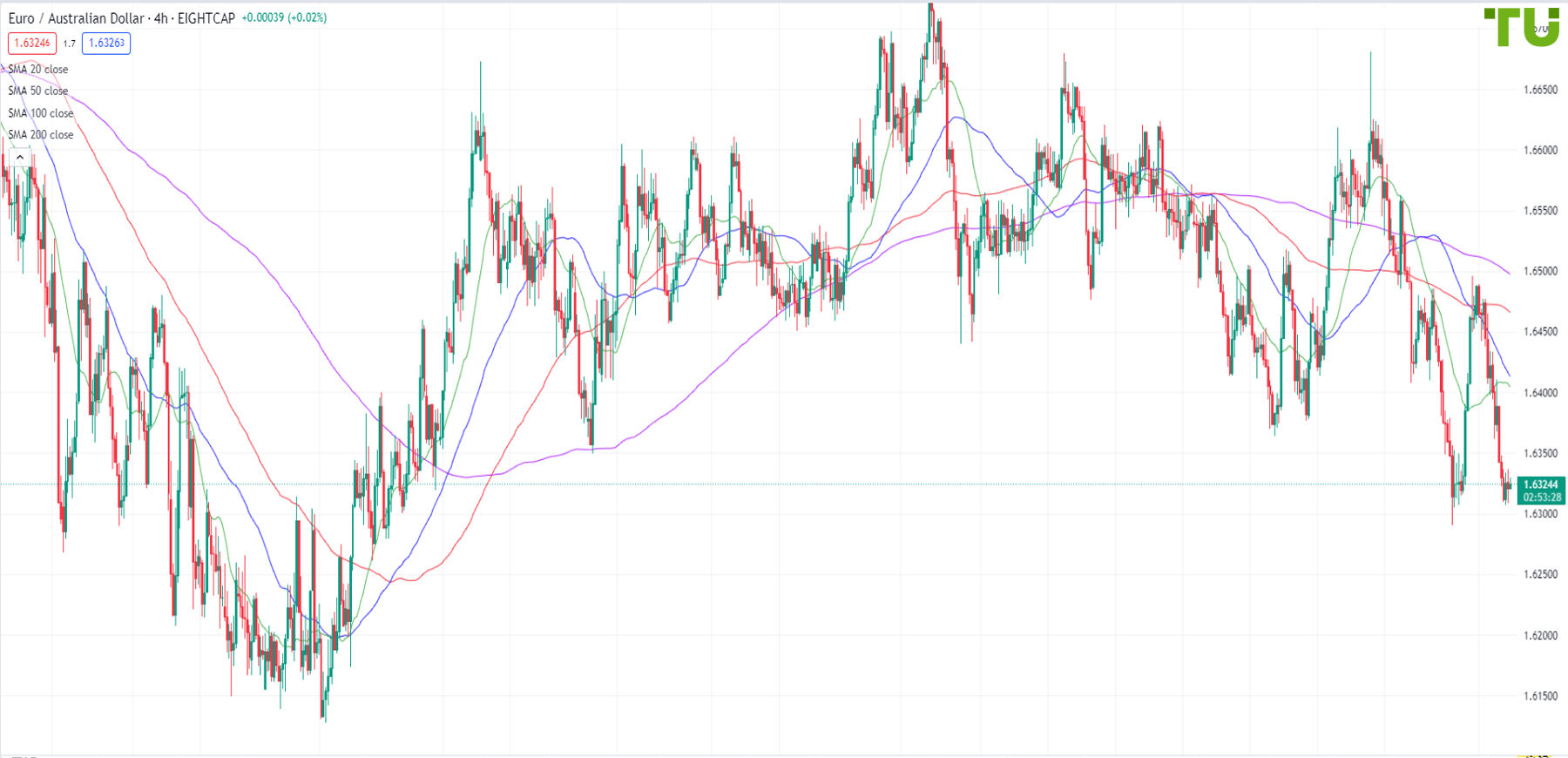
EUR/AUD continued to decline
02.05.2024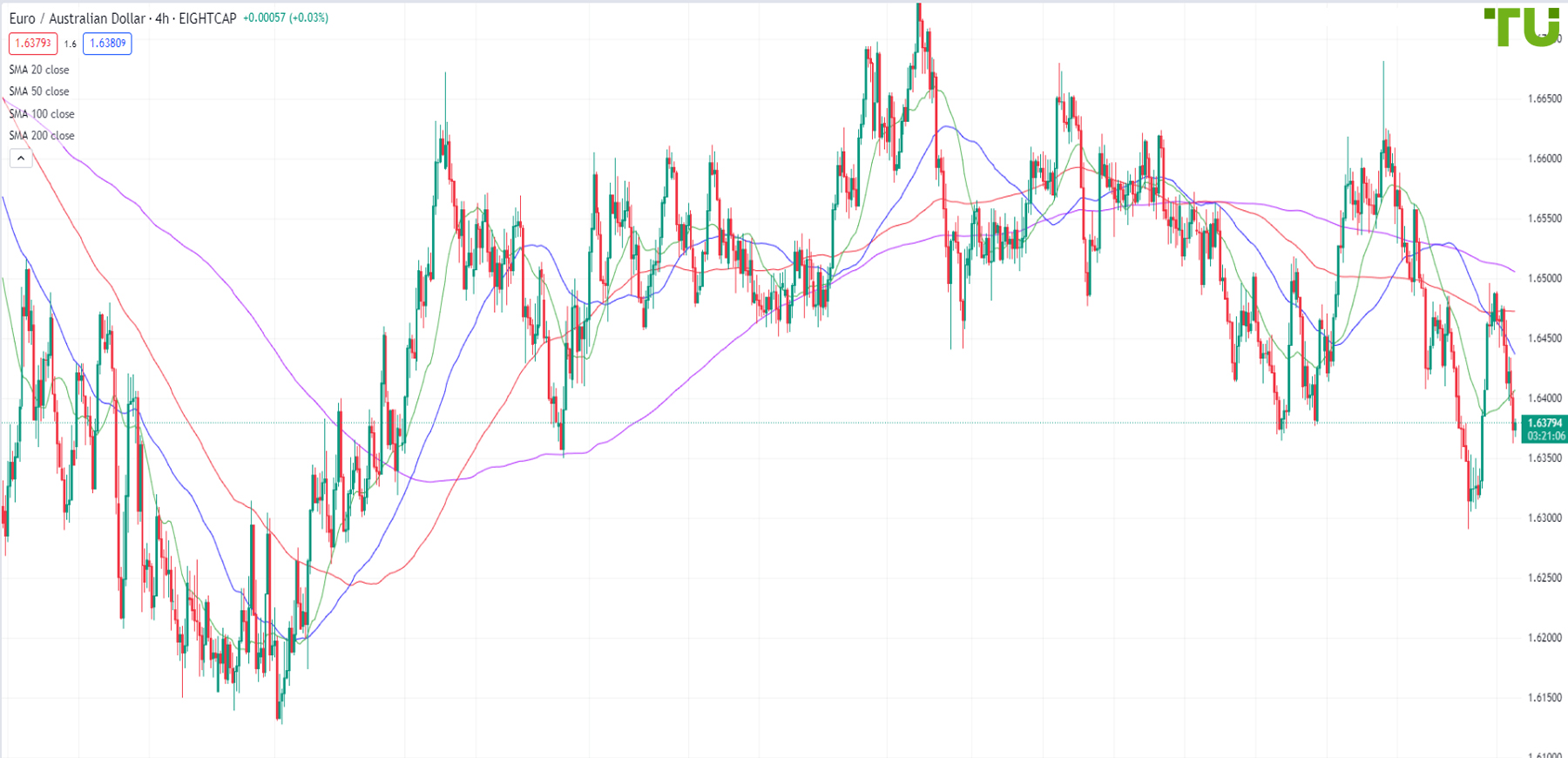
EUR/AUD returned to the 1.6490 resistance
01.05.2024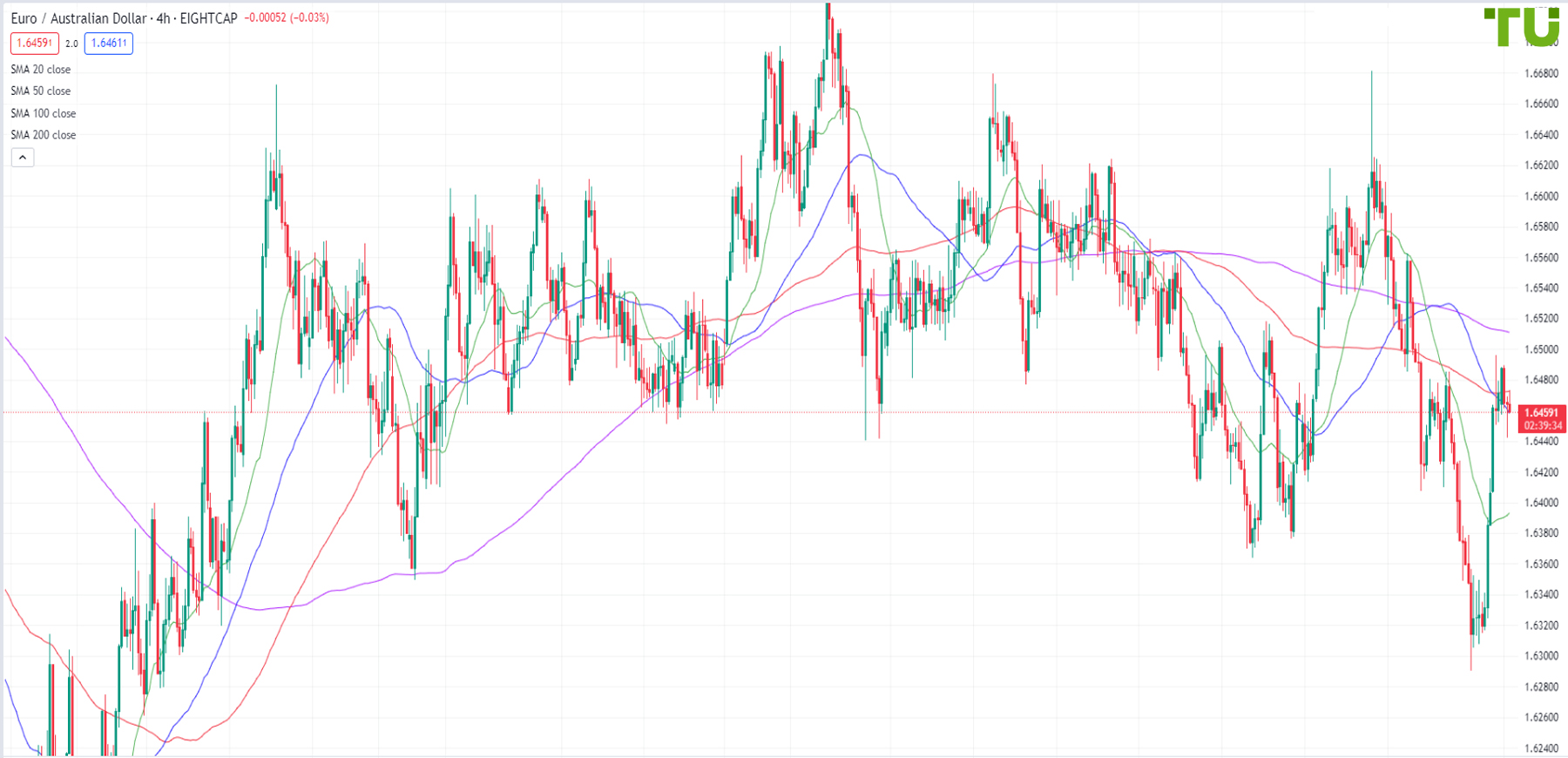
EUR/AUD is recovering after a decline
30.04.2024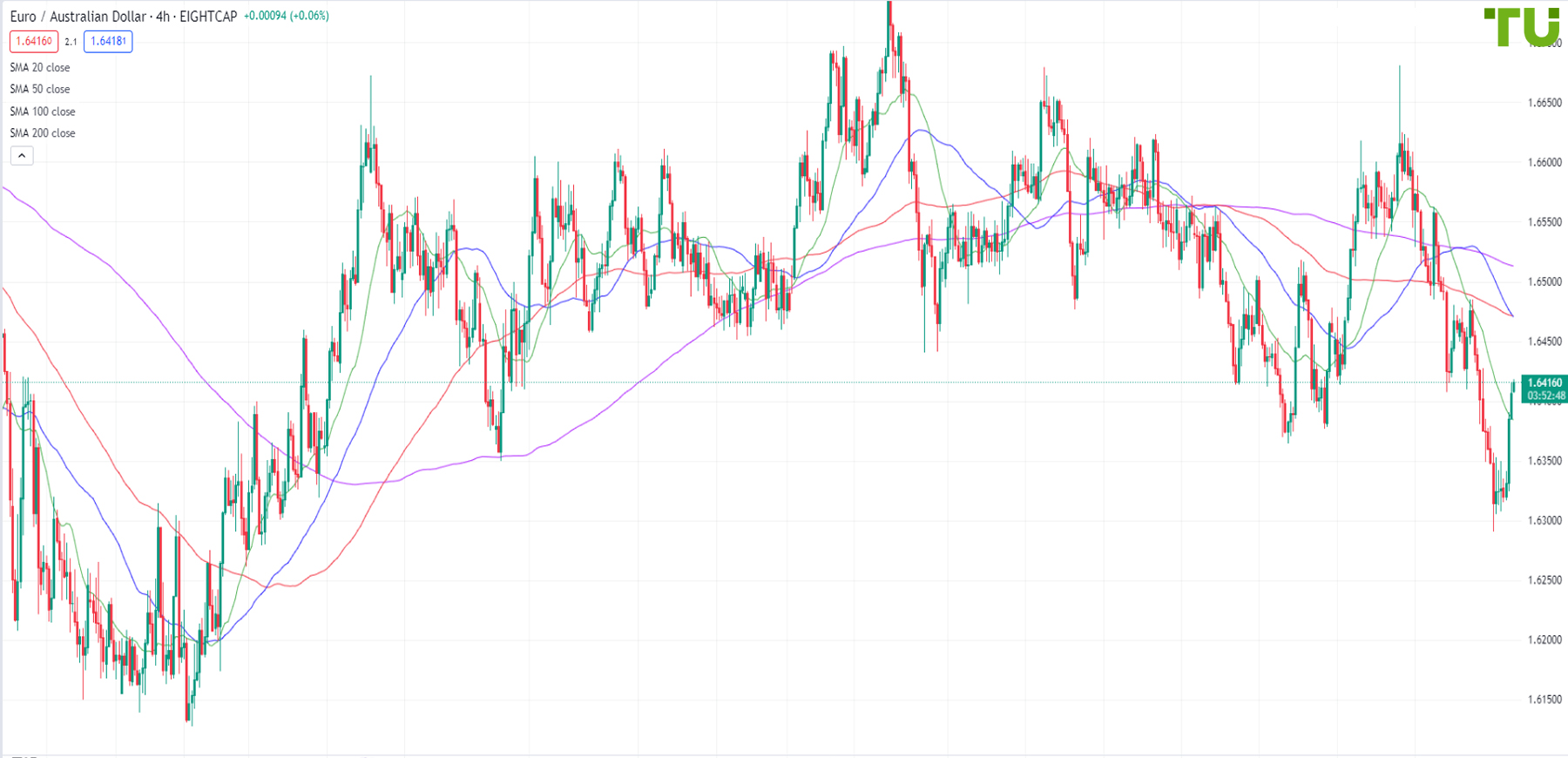
EUR/AUD refreshes current minimum
29.04.2024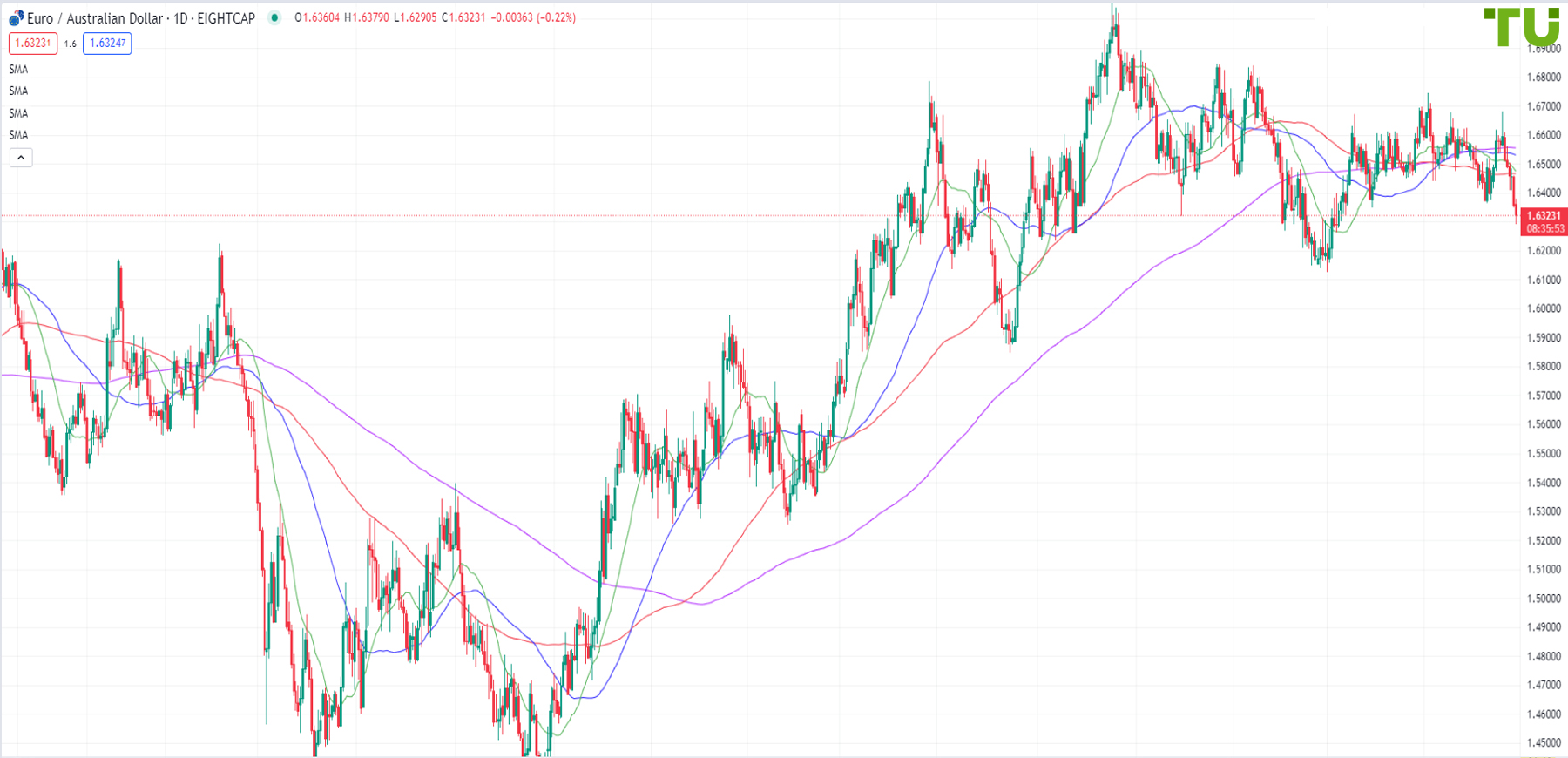
EUR/AUD tested 1.6380 strong support
26.04.2024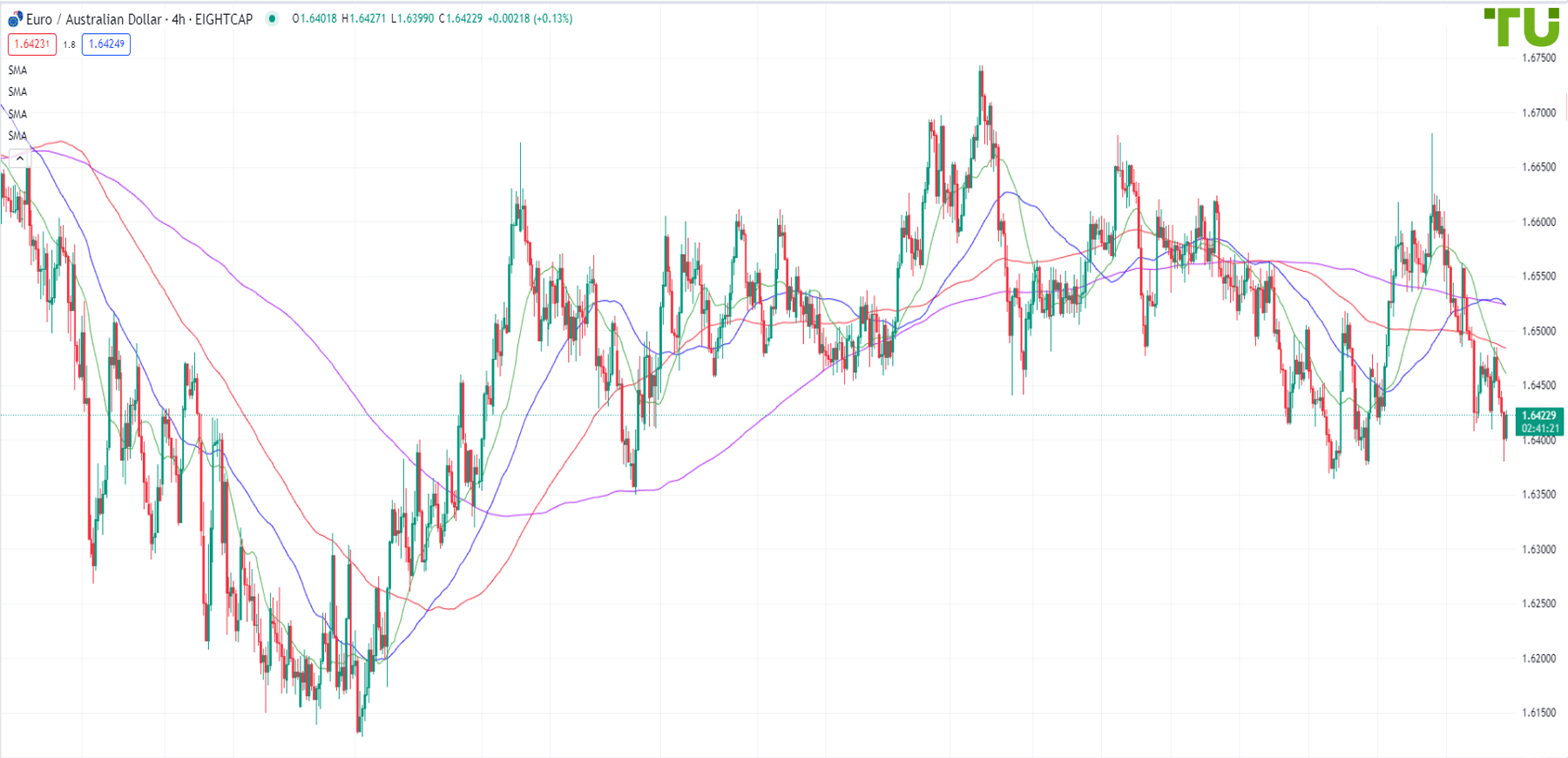
EUR/AUD continues to sell on rallies
25.04.2024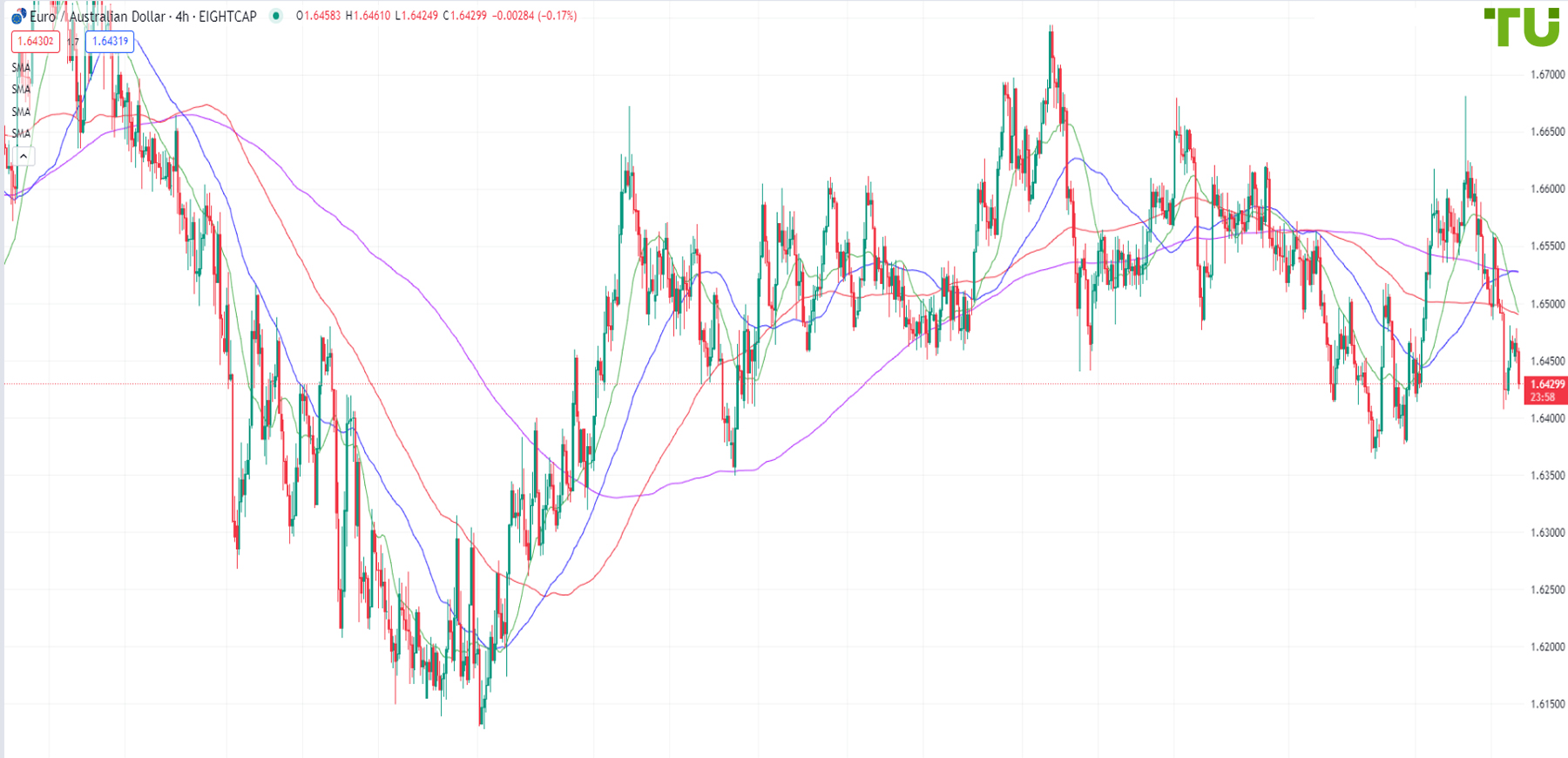
EUR/AUD dipped to 1.6410
24.04.2024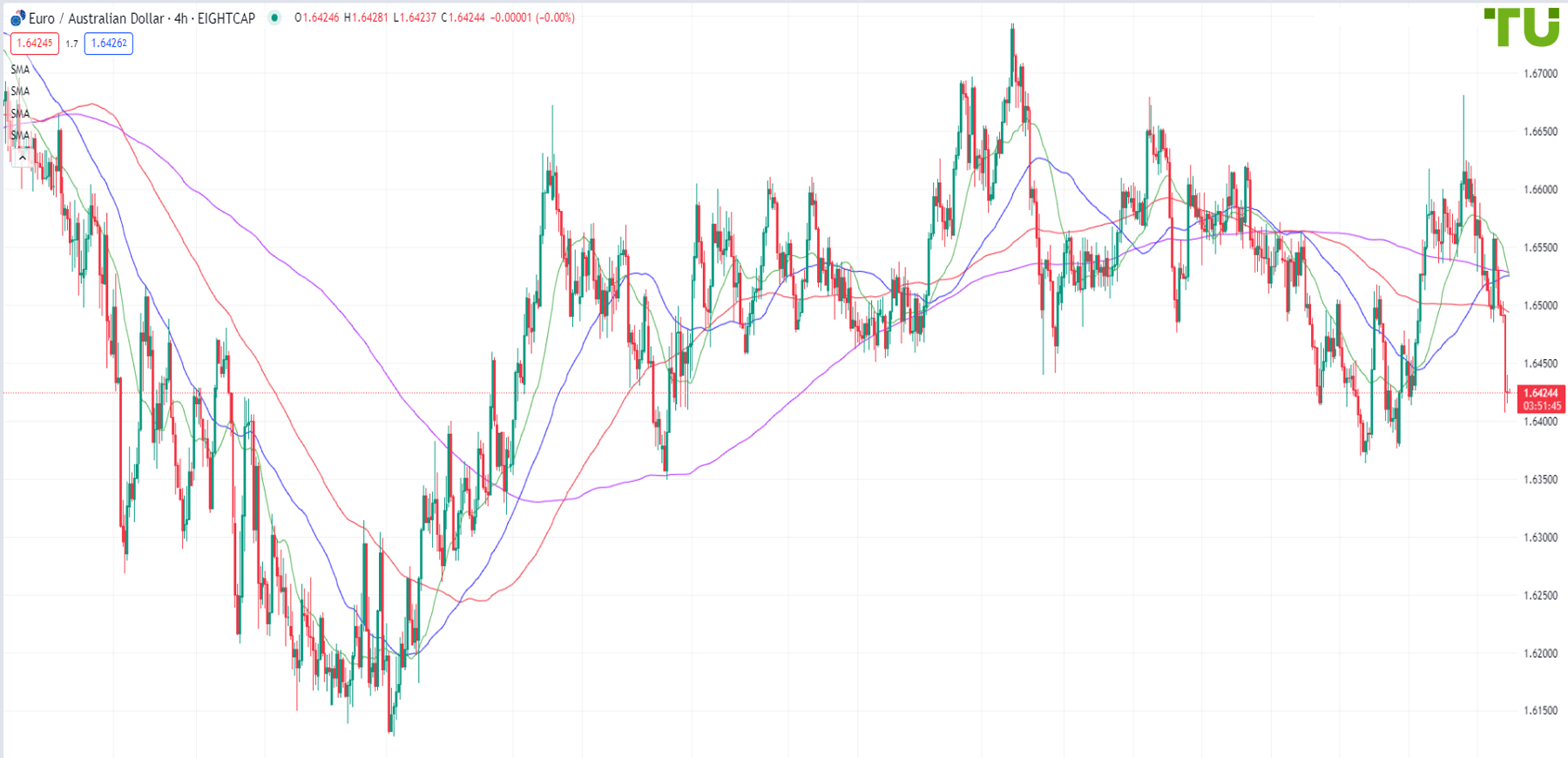
EUR/AUD recovers losses after German PMI release
23.04.2024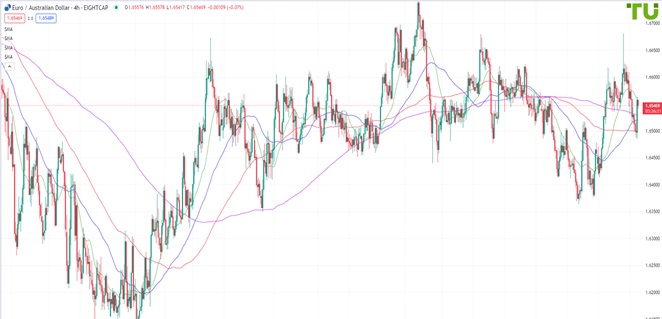
EUR/AUD risks further decline
22.04.2024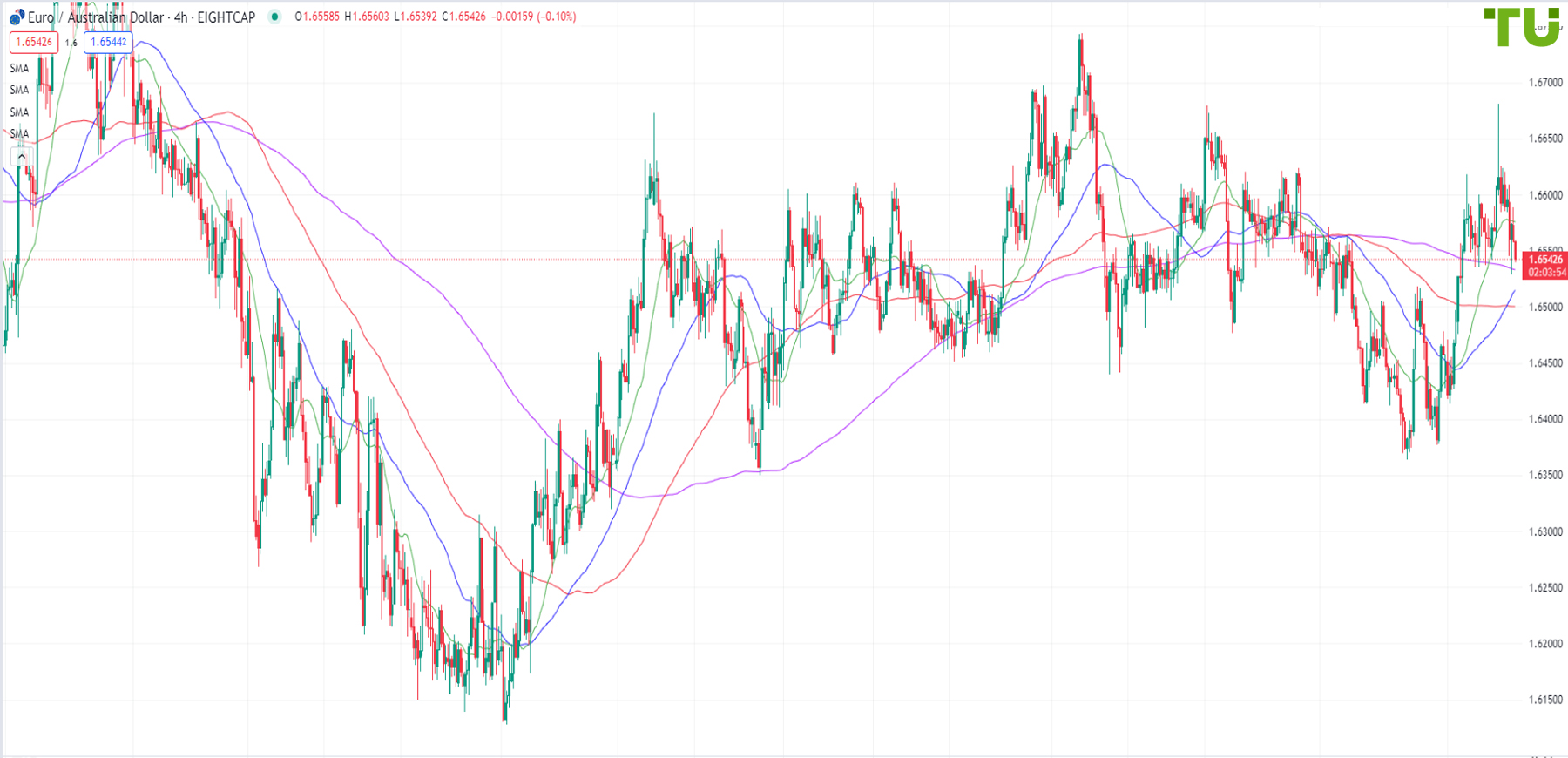
EUR/AUD returns to support at 1.6580 after rising to 1.6680
19.04.2024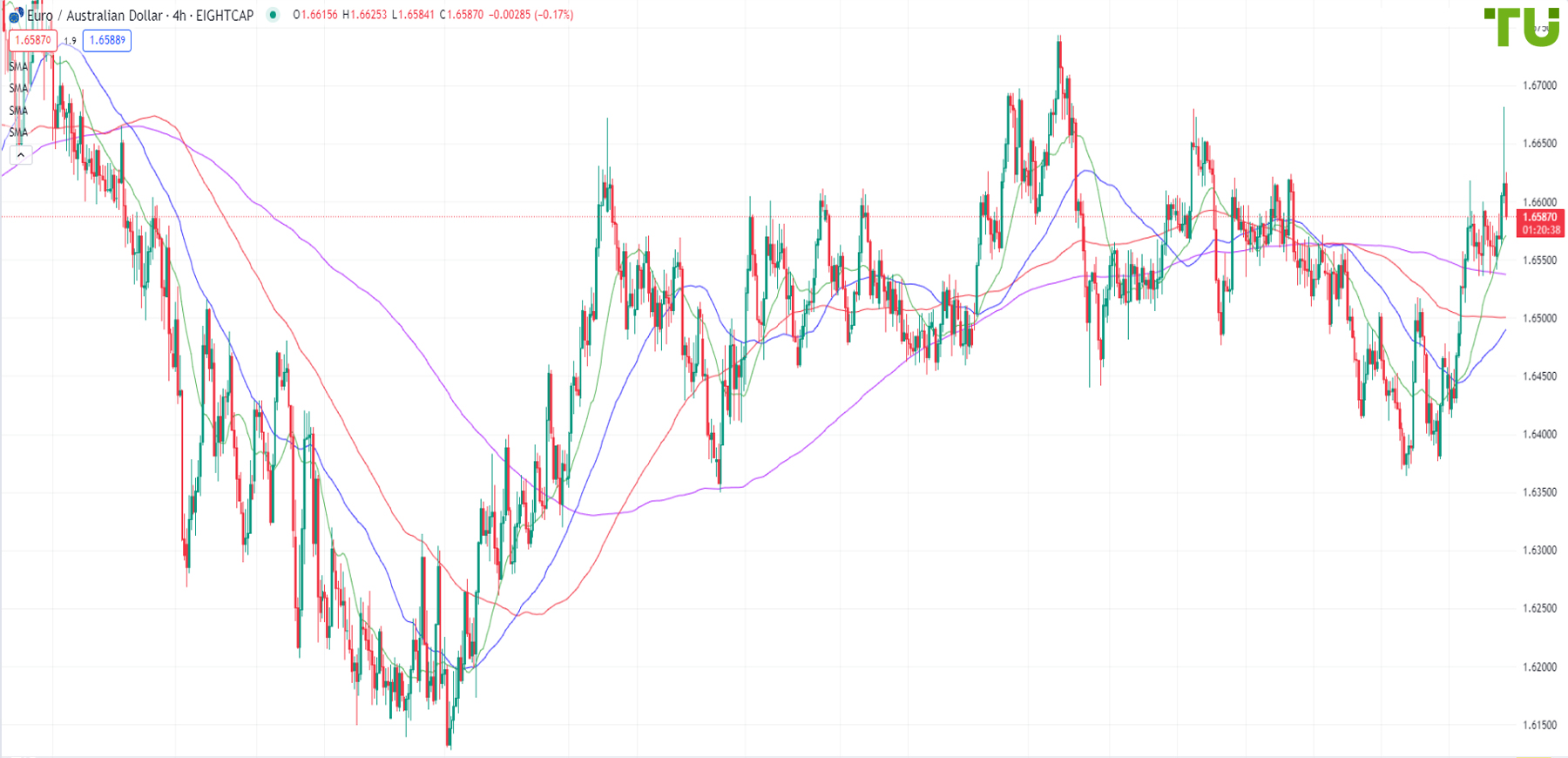
Euro/Australian dollar consolidates after growth
18.04.2024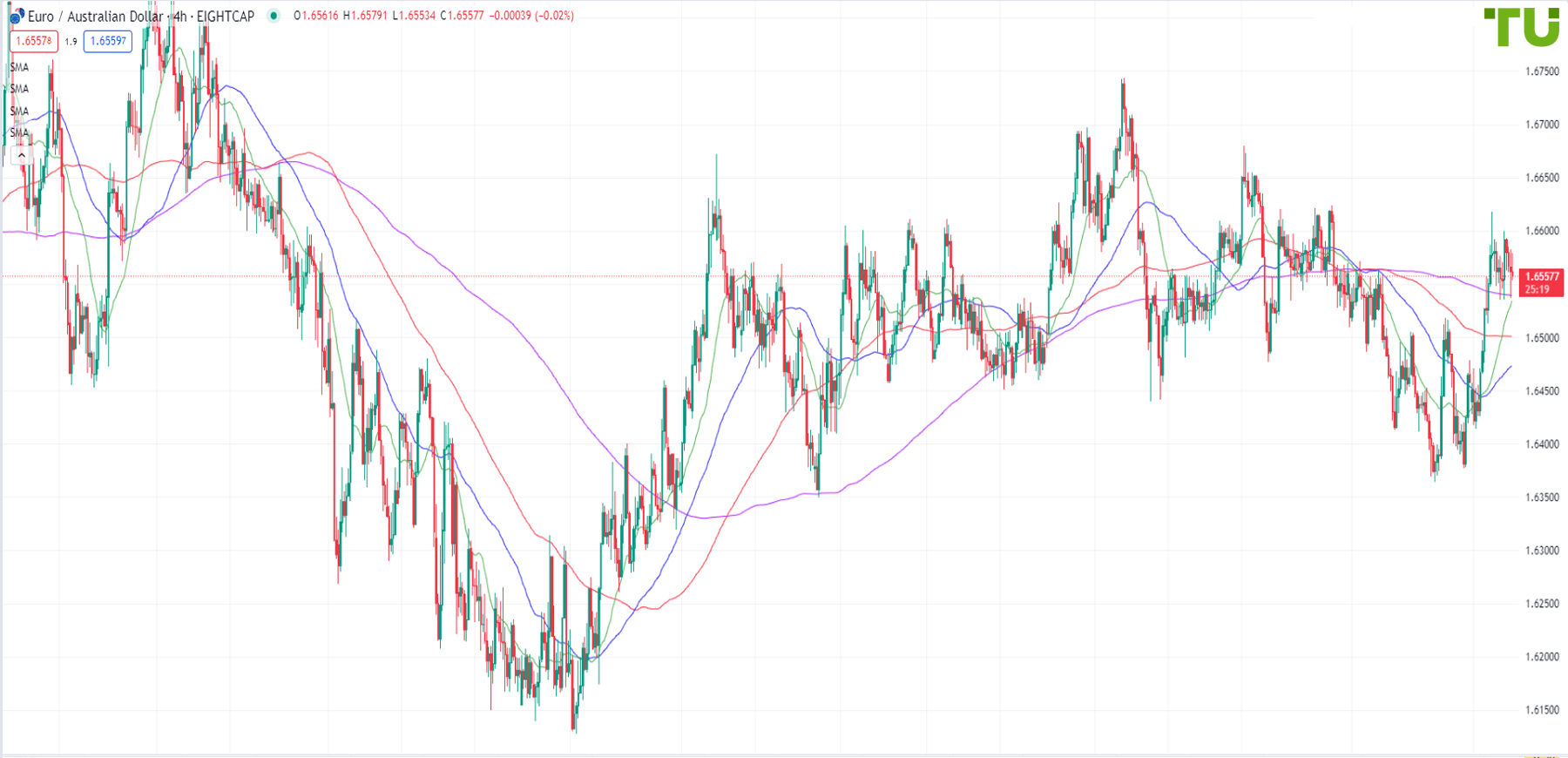
Euro/Australian dollar declines following growth
17.04.2024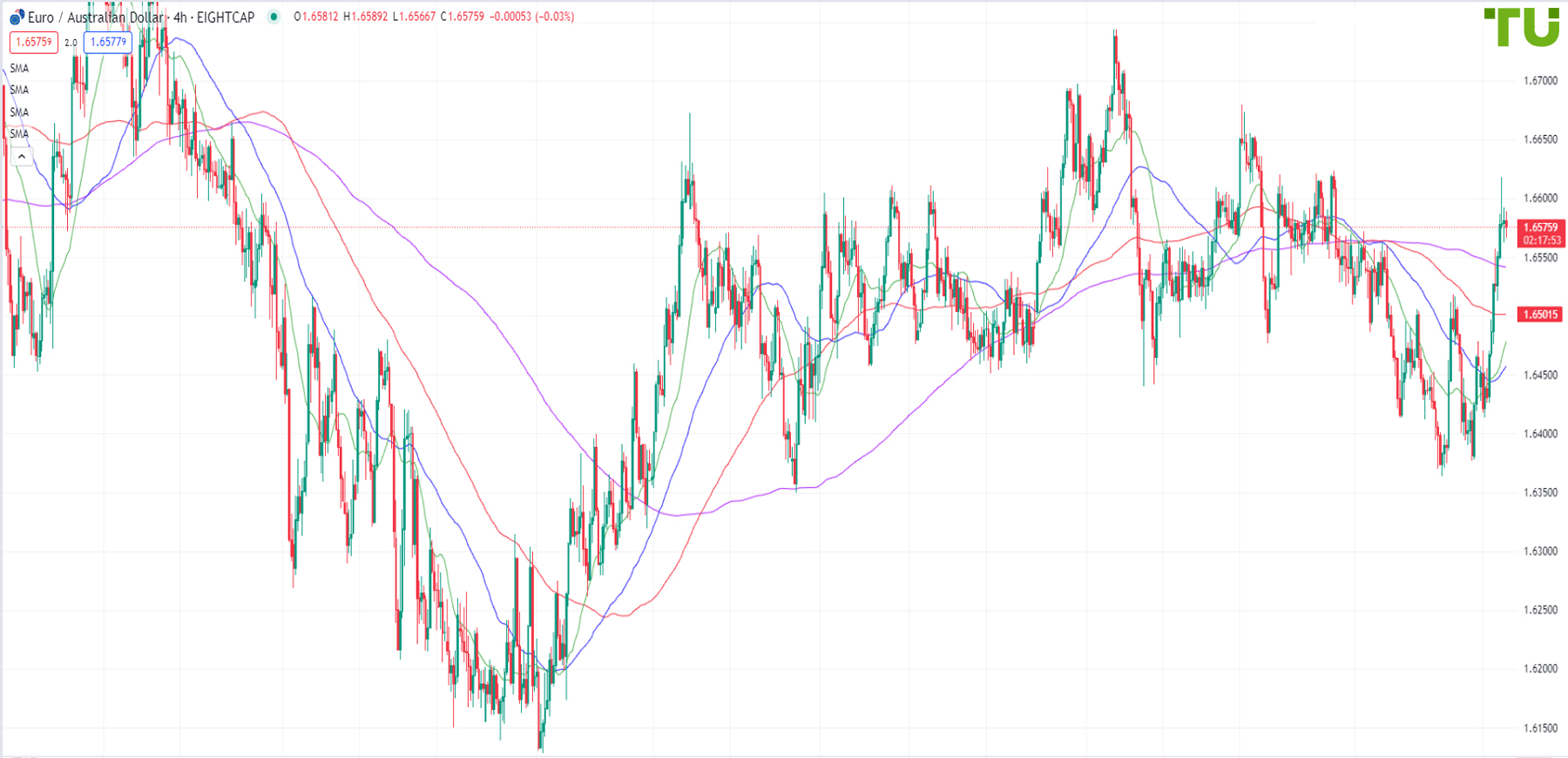
Euro/Aussie continues to grow
16.04.2024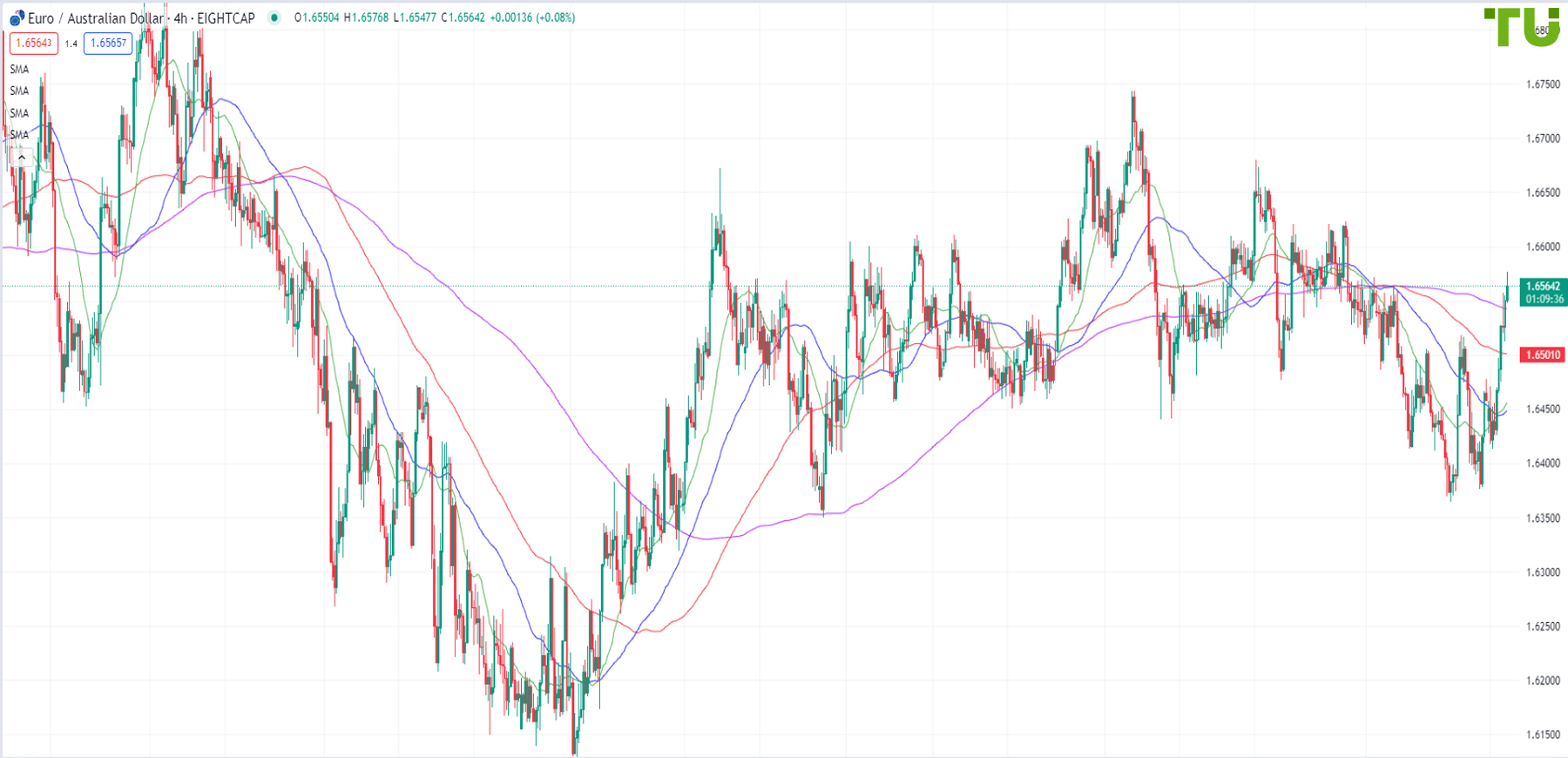
Euro/Aussie redeemed again from 1.6380 support
15.04.2024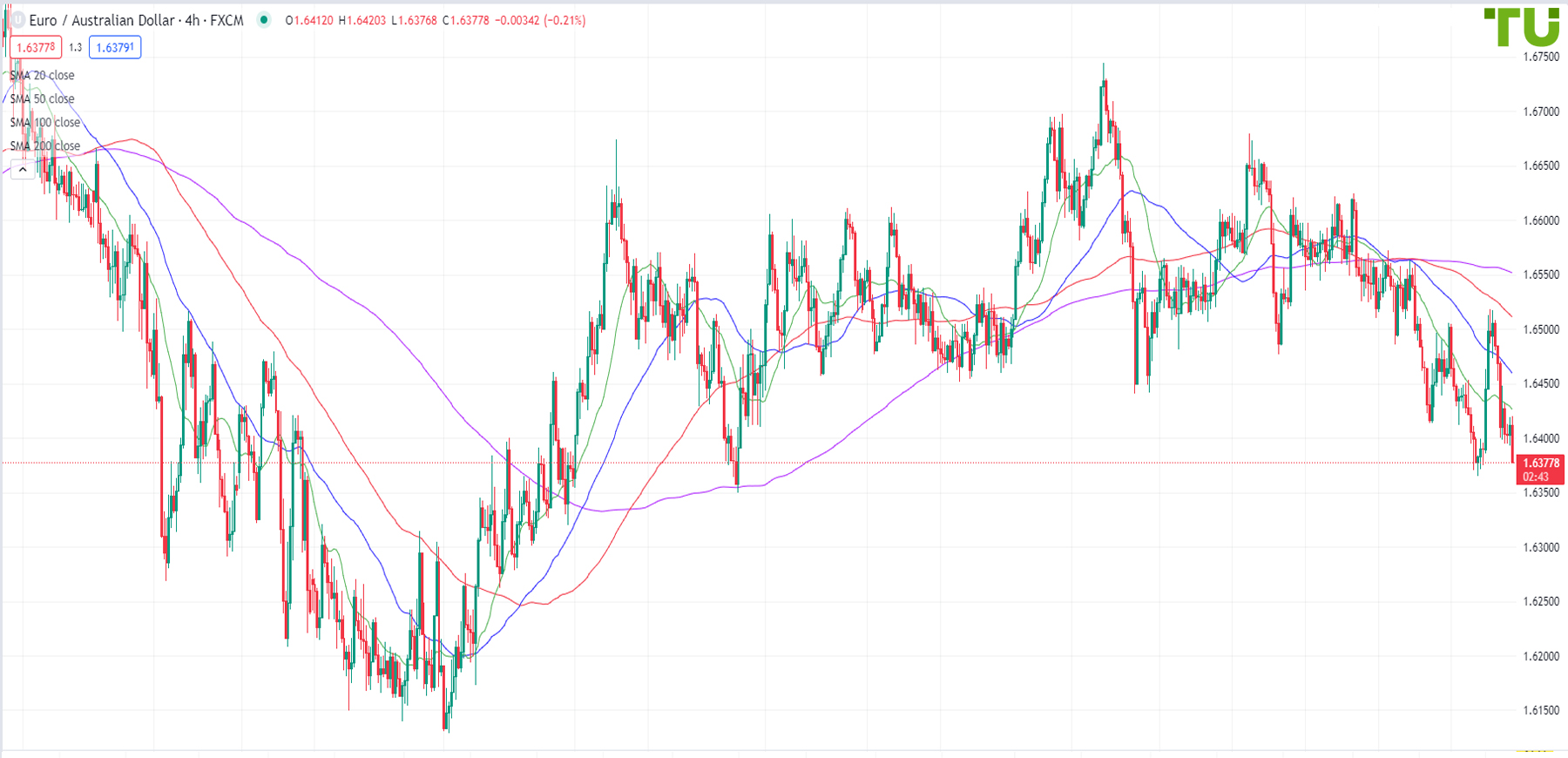
Euro/Aussie returned to the support at 1.6380
12.04.2024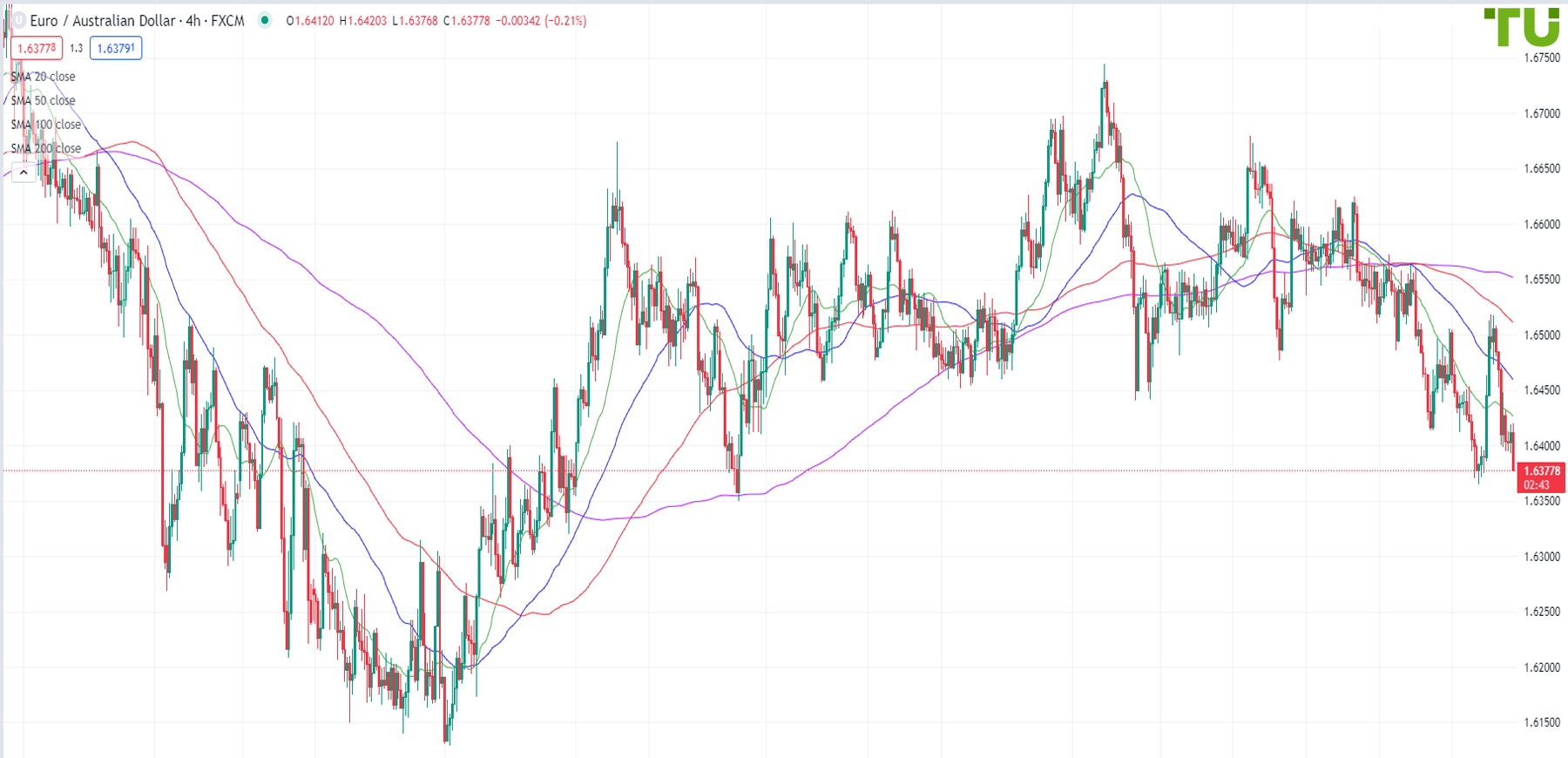
Euro/Aussie soared towards resistance at 1.6515
11.04.2024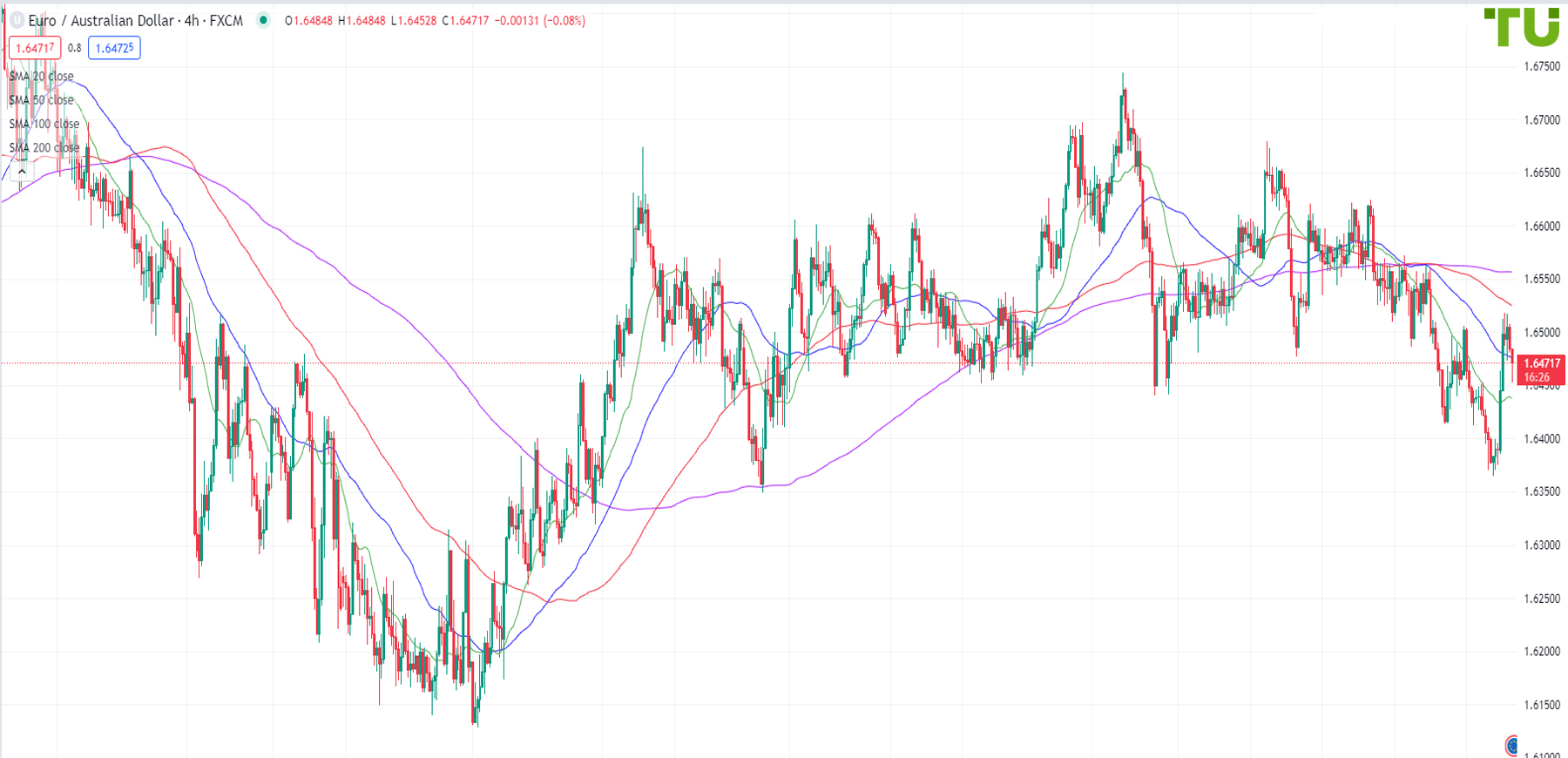
Euro/Aussie continues to decline
10.04.2024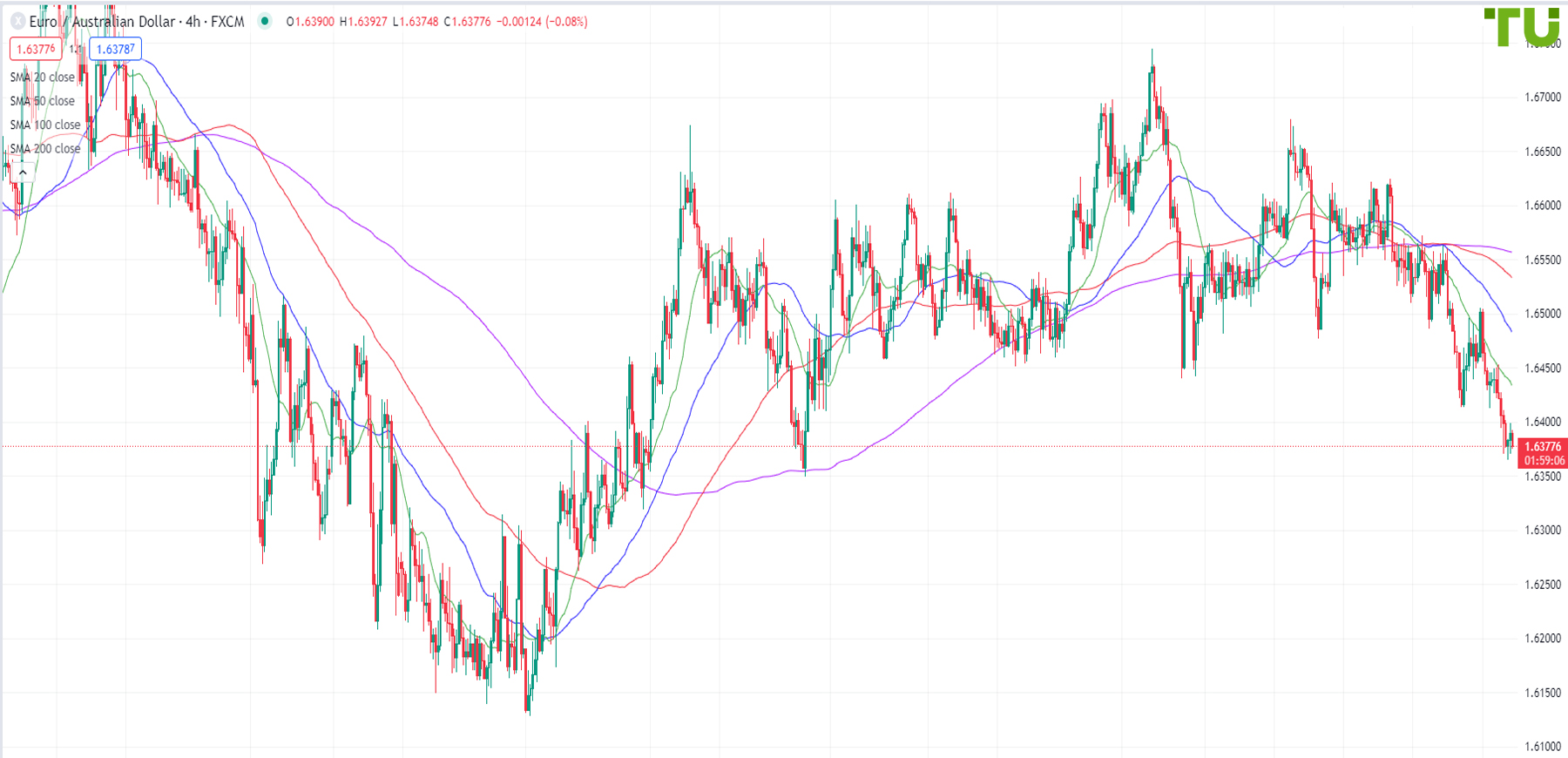
Euro/Aussie returned to support at 1.6415
09.04.2024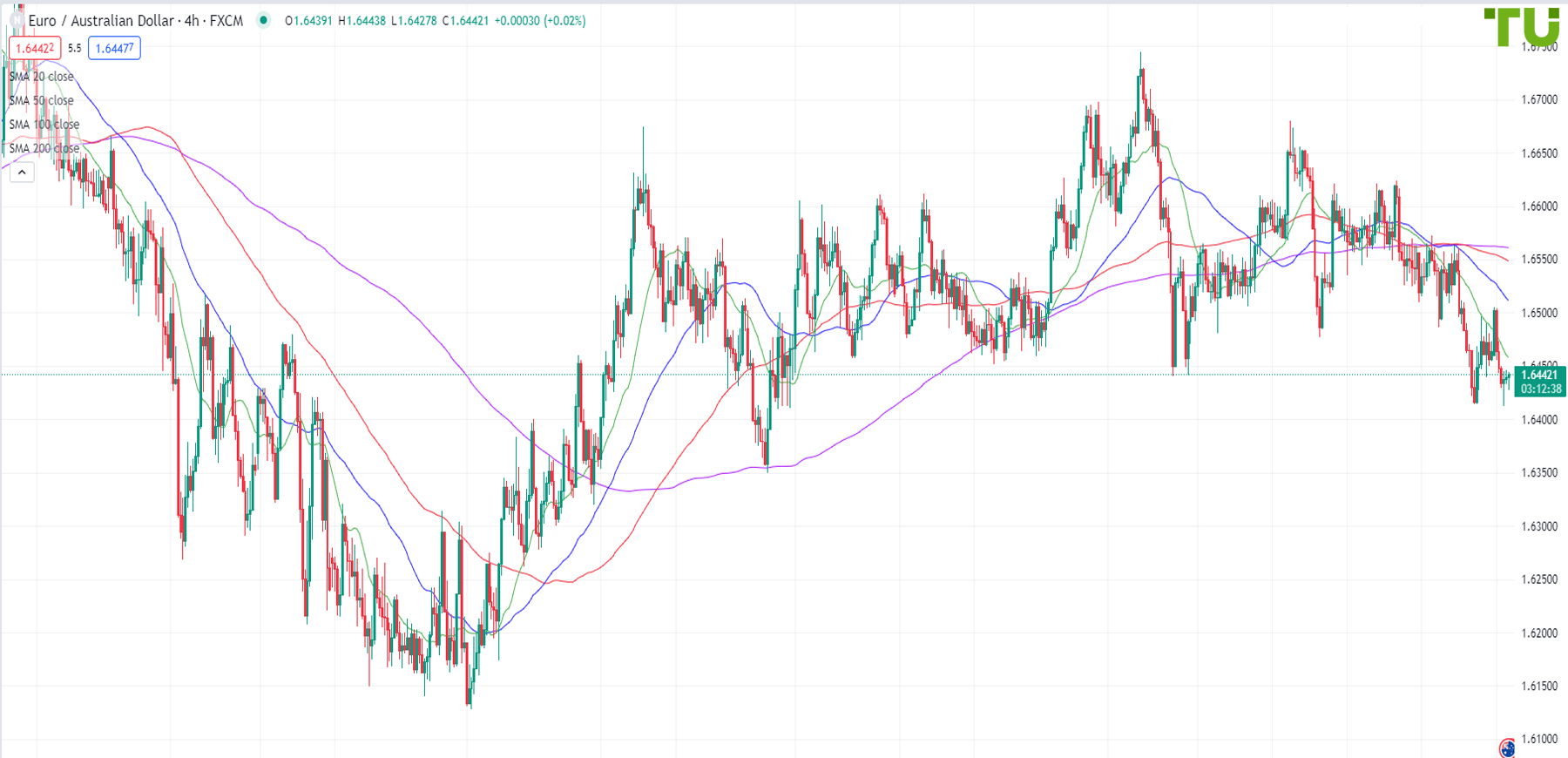
Euro/Aussie trades below 1.6490
08.04.2024
Euro/Aussie selling on the upside
05.04.2024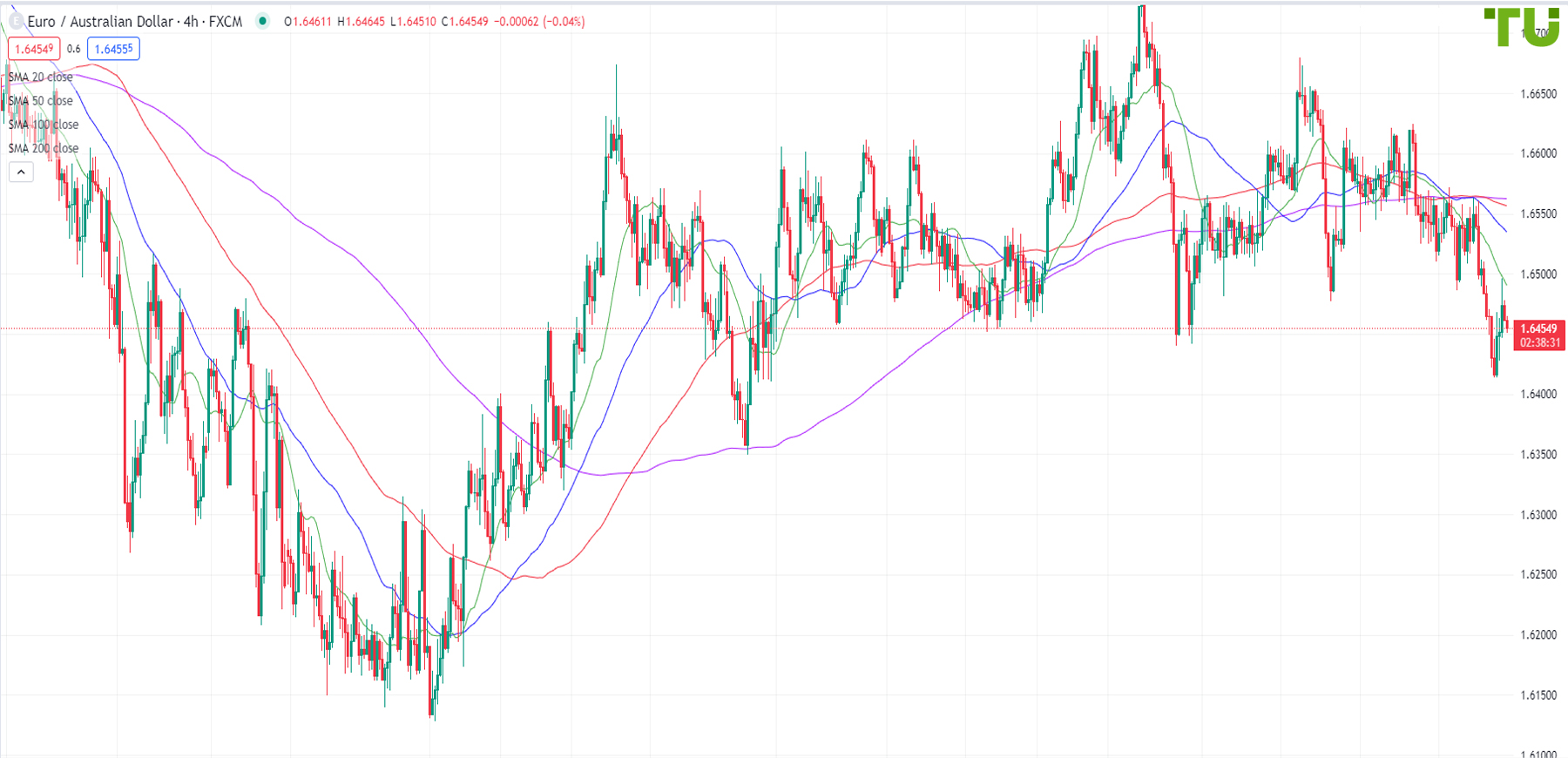
Euro/Aussie resumed falling
04.04.2024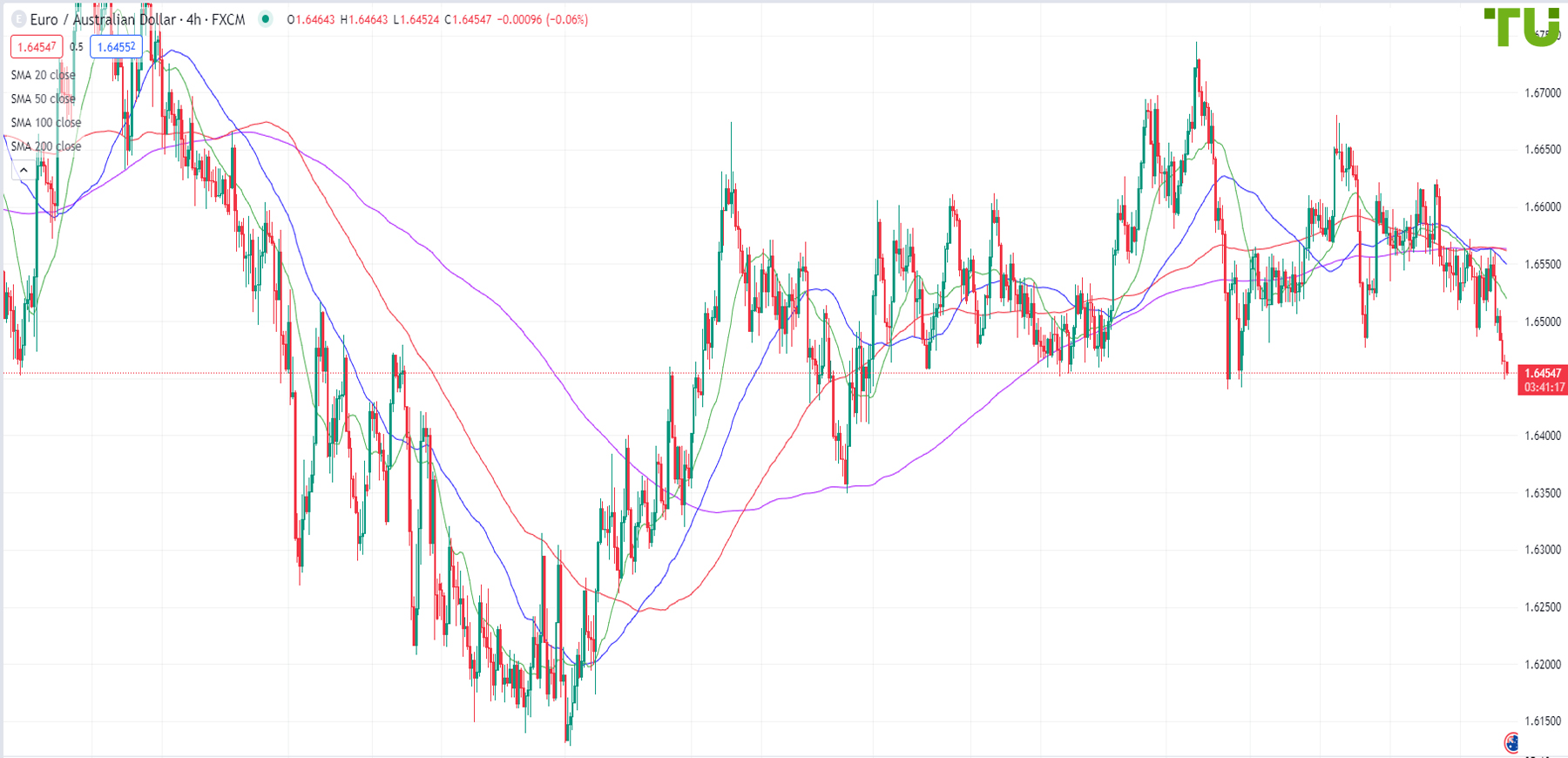
EUR/AUD Chart
How is the EUR/AUD forecast made?
If you look at the EUR/AUD chart, you will see that this pair has low volatility and therefore is considered a non-technical one. It is suitable for novice traders who prefer conservative or moderate Forex trading strategies.
The exchange rate is influenced not only by the general trend in the international Forex market but also by the difference in the discount rates of Australia and Europe, consumer and commodity prices. However, the European countries rely on the services sector and industry, while the Australian economy is developing thanks to agriculture and natural resources.
This trading pair correlates with GBR/JPY, USD/JPY, and EUR/JPY the most. TU experts have determined that the correlation is dynamic and could differ on different days or chart intervals. Therefore, when making trading decisions, you need to take into account the EUR/AUD forecast made by experts based on technical indicators, patterns, and support and resistance levels.
